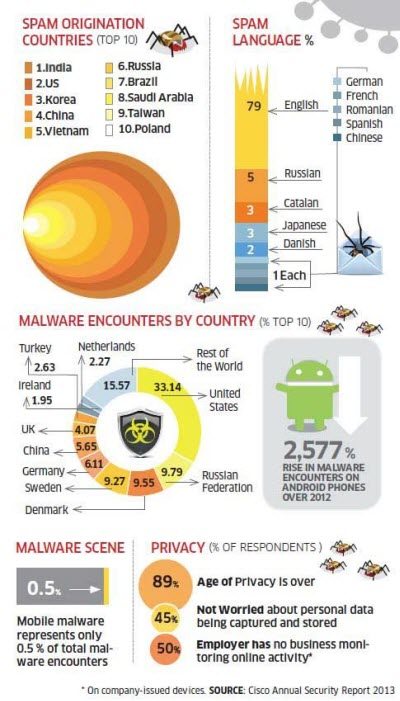Cisco Report Shows “Good” Sites Have More Malware Than Porn Sites
Ryan Martin / 12 years ago

When it comes to catching viruses, malware and adware on the internet “word of mouth” will tell you that porn websites, pharmaceutical sites and gambling sites are some of the most dangerous out there. Cisco’s latest 2013 annual security report challenges this commonly-held assumption about internet security. Cisco shows us that the data contradicts what everyone thinks. In fact, the riskier links were not found on the aforementioned “dodgy” websites but in fact on regular safe-looking websites such as search engines or online shopping sites.
Cisco has stated that the average person is 182 times more likely to download malware on a safe site’s advertisements than on those sites with pornographic content. A random ecommerce site is about 21 times more likely to see you infected with an internet “bug” and you are also 27 times more likely to download malware from a no-name search engine than from a counterfeit software website.
It is clear then that Cisco’s findings look set to shake the foundations of internet security. Internet users are hugely mislead in the way they use the internet and need to start changing the way they act in general as opposed to consigning particular types of websites to that “dodgy” category.
On a related subject the 2013 annual security report by Cisco revealed Android malware is going through the roof, up 2577% in 2012, and global spam email volumes were down 18% overall – perhaps due to a series of recent take-downs of large spam email servers.
If you’d like to find out more then you can do so here.
What do you think of Cisco’s findings? Is it likely to change the way you view surfing the web? Let us know your thoughts.



















